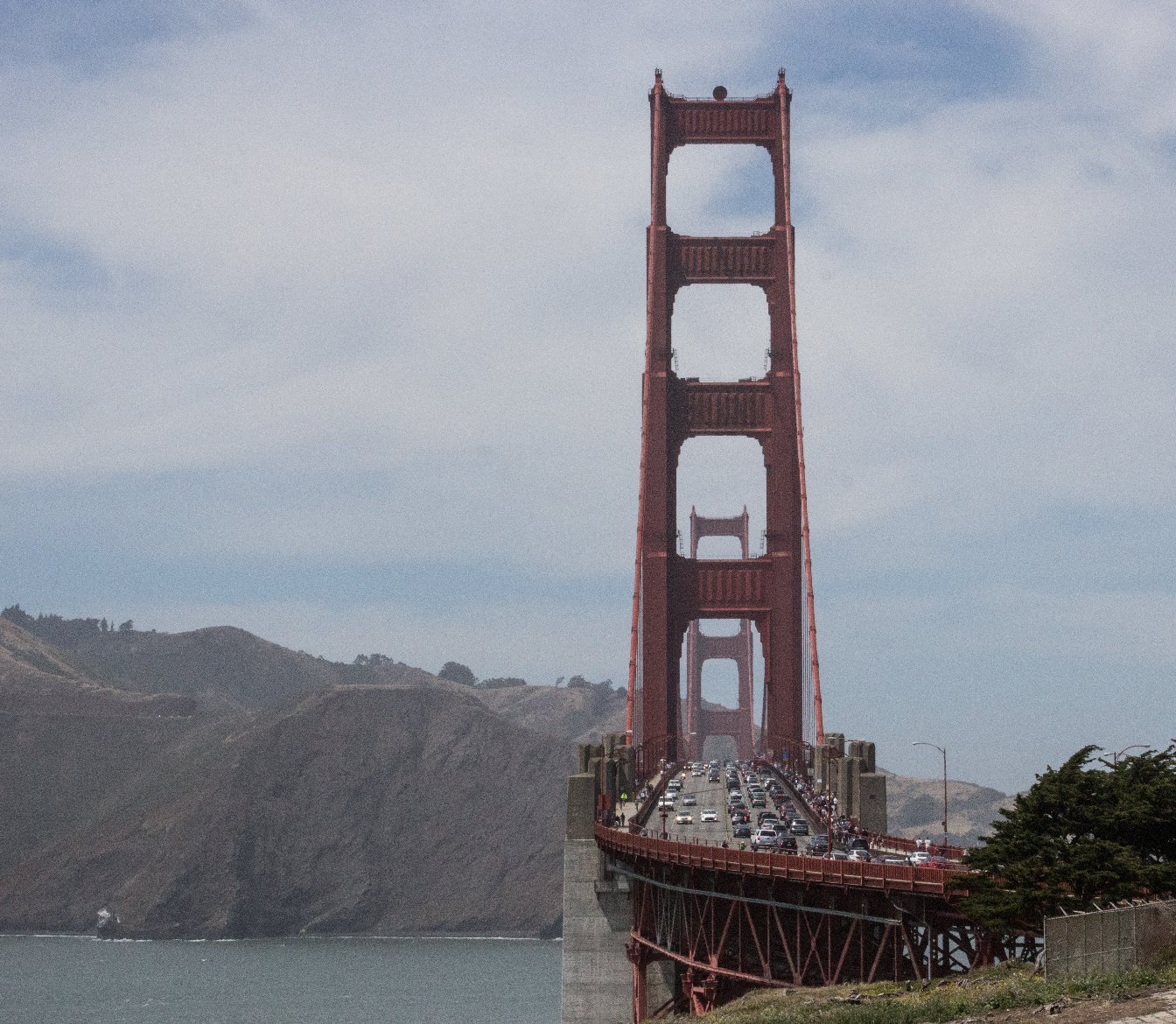“Without the tolls and fares being increased slightly every year, we would have trouble continuing to maintain our operating budget because the cost of goods and services goes up every year,” said Priya Clemens, spokeswoman for the bridge district.
Clemens said that the toll increases help pay for day-to-day bridge operations and maintenance, such as repaving roads, renewing the bus fleet and servicing the ferries.
More than 40 million vehicles crossed the Golden Gate Bridge last year. That’s the highest usage the bridge has seen in nearly 15 years, which Clemens said has also helped rein in the bridge district’s deficit.
If you take the really long view, even the pricey-looking pay-by-plate toll of $7.50 is a bargain.
Today, only southbound drivers pay a toll. In 1937, the year the bridge opened, drivers paid 50 cents to cross — each way. According to the Bureau of Labor Statistics CPI Inflation Calculator, that $1 round-trip charge is the equivalent of $16.68 in 2016 dollars.
The picture changes if you look at more of the toll history. Bridge directors actually reduced tolls three times — to 40 cents each way in July 1950; to 30 cents in February 1955; and to 25 cents in October 1955. A 40-trip book of commute tickets was priced at $7 after that final reduction,.
Those 1955 cuts were made in response to pressure from local politicians — notably state Sen. Jack McCarthy, a Republican representing parts of Marin and San Francisco — who argued that the district’s revenue from bridge tolls was far more than it needed to make ends meet.
After the district voted in August 1955 to reduce the toll to a quarter, board member William Hadeler foresaw a future that could be toll-free, if only cash weren’t needed to keep the bridge in good repair.
“We are not going to be content with a 25-cent toll,” Hadeler said, according to what was then called the Daily Independent Journal (today’s Marin IJ). “As soon as conditions permit, I — and I am sure all of the directors — would like to see the toll reduced to 20 cents, to 15 cents, to 10 cents; and some day, if possible, no toll at all. But free tolls are something for the distant future. The Golden Gate Bridge is here for all time. It has to be operated and maintained so that it will always be here. And someone must pay the cost of those expenditures. That is why we have tolls.”
That “someone” who needs to pay the cost of upkeep turns out to be us.
The bridge district managed to keep fares at the equivalent of 50 cents per round trip until 1974, when the price went up to 75 cents (or $3.65 in today’s bucks.) They’ve been headed up ever since.
